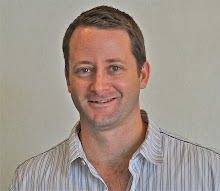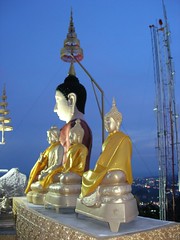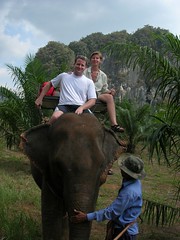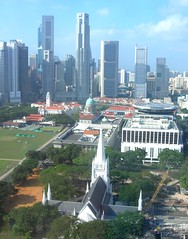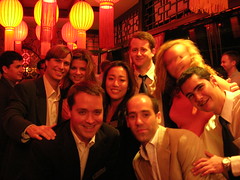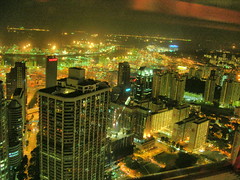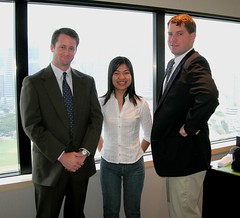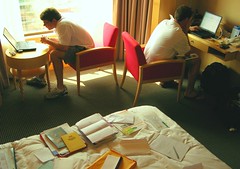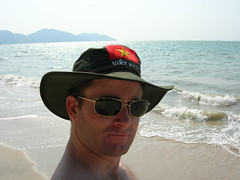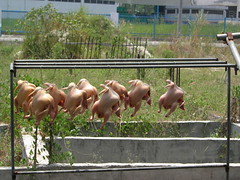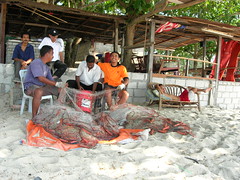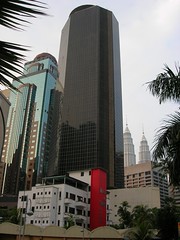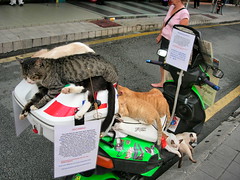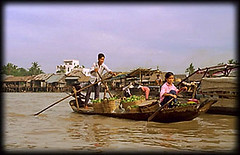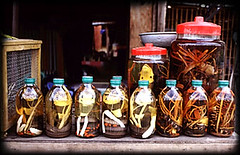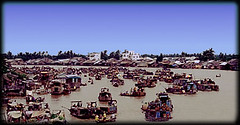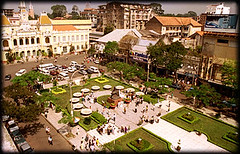MGM vs. Grokster
Today the Supreme Court will hear MGM vs. Grokster. For the uninitiated, Grokster is a peer-to-peer software that allows users to share content such as music, movies, games, etc. over a decentralized network. Last summer, p2p networks such as KaZaA, Morpheus and Grokster escaped Napster's fate by claiming that, because there is no central server acting as a clearinghouse for content piracy, the proprietors cannot control how the users use the software.
This case pits the major labels against file-sharing services in a battle royale that, as CNN/Money notes, has attracted all sorts of strange bedfellows:
Grokster has drawn extraordinary interest, not just from the technology industry but from groups like the Christian Coalition of America, the American Civil Liberties Union, the National Taxpayers Union and the commissioner of major league baseball.One pair of strange bedfellows: religious and "pro-family" groups -- typically at odds with the entertainment industry over on-air nudity and profanity -- are backing Hollywood and the music labels in the case because they think peer-to-peer is widely used by pornographers and other miscreants.
In Grokster's corner are a lot of artists and emerging technology companies, who have filed friend-of-court briefs, according to Wired. These include Feedster, Kaleidescape and Slim Devices, along with 20 artists so far, including Heart, Chuck D, DJ Spooky and Brian Eno.
Also joining the fray is Dallas Mavericks owner Mark Cuban, who made his billions by selling the multimedia and streaming company he founded, Broadcast.com, to Yahoo! in July 1999. Cuban is funding the Electronic Frontier Foundation's defense of Grokster, arguing that shutting down Grokster would stifle innovation in the digital media space:
Of course, there's some self-dealing in Cuban's stand, given his big bets on digital film production, distribution and exhibition, but I don't fault him for it. Among the things I appreciate about p2p networks is how they've democratized the delivery channel for content, wresting it from major labels, large record store chains, Clear Channel and MTV, and placed it in the hands of anyone with an Internet connection. In a sense, these networks represent a symbiosis between distribution and consumer preferences, hence the existence of Big Champagne.If Grokster loses, technological innovation might not die, but it will have such a significant price tag associated with it, it will be the domain of the big corporations only.
It wont be a good day when high school entrepreneurs have to get a fairness opinion from a technology oriented law firm to confirm that big music or movie studios wont sue you because they can come up with an angle that makes a judge believe the technology might impact the music business. It will be a sad day when American corporations start to hold their US digital innovations and inventions overseas to protect them from the RIAA, moving important jobs overseas with them.
Thats what is ahead of us if Grokster loses.
I admit that I'm skeptical that Grokster will be able to successfully argue that its technology is used to do much besides violate copyright, but I think the bigger question is whether p2p poses the threat of sustained, long-term damage to content creators and owners. For the little guy who just wants to get his music or film out there and any artist trying to reach new audiences, p2p has been a blessing. For well-known acts, p2p has been a real threat because, let's face it, you don't need p2p to discover OutKast or Usher.
Long-term, p2p represents an opportunity for content creators to cut costs and market more broadly than ever before, particularly as broadband adoption hits critical mass. For customers, that means an ever-increasing diversity of content offerings and, for the short-term, of means to receive content. Invariably, the market will reject most of these models and coalesce around a handful, but that timeline shouldn't be cut short artificially because old-line businesses have the deeper pockets and thus the better lawyers. Those are some of the reasons I hope Grokster manages to survive this battle.
Still, the absence of any licensing structure to date has made monetizing the p2p distribution process shaky at best. And it may stay that way for a while, given the barriers posed by publishers like BMI and ASCAP, who, presumably, will want their 8.5 cents a spin no matter what happens.
My last thought is that it's easy to thumb your nose at the majors and demand that they adjust their business models to respond to the technology, as if a changing a business model is something that can be done with the flick of a switch. Change hurts and it's proportionally more painful as the organization gets larger. It's usually accompanied by layoffs, which I suppose are inevitable in this situation.
Big Music opened a Pandora's Box when it released the CD and thereby put music in binary code. Music and, by extension, film have gone from being packaged goods to information goods and, as Cuban grasped early on, any business that hopes to continue in this space should have a model that reflects that fundamental shift in economics. For a cautionary tale, see Kodak.
As I've seen firsthand studying the unit economics of iTunes, there economies of scale are certainly there in the single-song, mp3-style model of packaging and delivering music. The question is whether this model will ever bring the gross margins that Big Music wallowed in during the late 1990s, when $20 CDs were, for the most part, the only game in town and people had the disposable income to afford them.
Labels: business, technology
